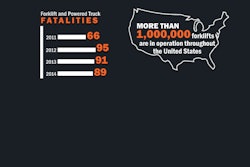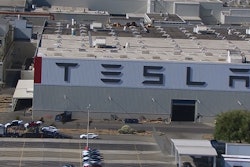Product quality and safety are at the forefront of all food processors’ minds. Direction from retailers and regulations are driving the implementation of X-ray inspection by more food processors globally. X-ray inspection offers manufacturers advantages over metal detection due to its ability to also detect glass, calcified bones and stones. It is also being used to improve product and packaging quality and integrity by detecting missing or broken product, providing mass estimation, component count, fill level and seal integrity. These advantages have a lasting impact on the return on investment for food processors.
However, knowing what inspection system to use and where to place it in the production line can be challenging. Here are four things to consider when incorporating X-ray inspection into a production line:
- Line location
- Inspection area and system size
- X-ray beam location & beam geometry
- Sensitivity
Line Location
To ensure the highest product quality and safety, X-ray inspection systems should be placed at, or just after, final product packaging. This is the last checkpoint before product goes into a case. After this point, the risk of foreign material is greatly reduced because the product is already packaged. Though case inspection can be done, the detection levels will be higher since there is more product, increasing the overall density. Multiple layers can also increase the false detect rate, forcing the user to reduce the sensitivity of the system.
Bulk and free-flowing products should be inspected closest to the farm or field so foreign objects can be removed early from the line before they cause damage to downstream cutting and grinding equipment. It’s in this cutting and grinding equipment where foreign objects can be broken into smaller pieces and may not be detected. Adding X-ray inspection along with sorters, sieves and metal detection close to the farm or field aids in the ability to remove more foreign materials.
Pipeline inspection should be done after blending and just before the filler. If desired, X-ray inspection systems can also be implemented after packaging to ensure no foreign material entered the package at the filler.
Inspection Area and System Size
X-ray inspection systems come in a multitude of sizes to handle a full range of package types and dimensions. Therefore, it can be a challenge for food processors to understand what system best fits their application.
Evaluating the size of the inspection tunnel in relation to the dimensions of the package being inspected will guide you to the correct system. However, it is important to ensure the package will not only fit through the machine, but be of sufficient size so that the arc of the X-ray beam is adequate to inspect the entire area of the product. Otherwise, a larger system may be required.
Next, consider the line space available for an inspection system. Are there restrictions? Is there flexibility? Product handling is valuable to consider at this point in the selection process because it can greatly impact the overall length of the X-ray system. In most cases, curtains are used to shield X-ray radiation from exiting the tunnel. Bear in mind that when inspecting lighter packages the curtains can often cause the package to tip over, stall or skew. In these cases, alternate designs such as curtain-less models with curves or long tunnels are used. They will require a longer system length but will allow the package to successfully pass through.
Rejection of the package containing a foreign material is critical to the success of the inspection system. Most manufacturers provide reject devices based on the package that can be either integral to the X-ray system or mounted separately onto the customer’s outfeed conveyor. Understanding the function and location of this device will aid in ensuring the overall system fits properly into the production line.
X-ray Beam Orientation and Geometry
To accommodate the growing popularity of X-ray inspection in the food industry, the technology has evolved to handle nearly every package in the market. From tall, upright containers and pouches to flat retail packages and pharmaceutical vials, X-ray inspection systems exist to fit every need.
Capitalizing on the system with the optimal X-ray beam orientation can be challenging. Keep in mind the greatest X-ray inspection performance is achieved when the X-ray beam travels through the thinnest dimension of the container.
There are two main categories of systems available — vertical beam systems with the X-ray source either above or below the conveyor, and side-shoot systems with the source either in front of, or in the rear of, the machine. In general, vertical-beam systems are preferred for flat packaged products such as trays, boxes, bags and cartons, while side-shoot systems are recommended for upright cans, bottles, jars and pouches.
Once you’ve selected the type of system, the next step is to confirm the entire package will be inspected based on the inherent trapezoidal shape of the inspection beam. A system with the source below the conveyor will have a narrower X-ray beam at the base of the conveyor than a system with the source above the conveyor.
Though detection levels will be very similar within the vertical beam category, it’s important to understand where the X-ray source is located because the beam geometry will be different and will affect the maximum inspectable package size. Depending on the beam location, there could be risk of portions of the package not being inspected if the container is too tall and/or wide to fit inside the X-ray beam (See Figure 1).
Side-shoot systems may have more than one source and detector (dual and multiple), and each may be at a different angle and focus on a specific region of the containers. Having more than a single view provides a higher probability of detecting smaller foreign materials, especially in the bottom of the containers. Deciding which option is needed for your application is dependent on the foreign material size requirement that needs to be detected. Detecting smaller sizes requires more views because more views provide additional data to the X-ray system for better analysis.
Sensitivity
X-ray inspection technology is based on detecting differences in density which can make low-density items hard to detect. In general, most X-ray inspection systems are capable of detecting 1-2mm metal and 3-4mm glass. Scientifically, stainless steel metal is about 2.5 times denser than glass, which means the smallest detectable size glass will be 2.5 times larger. Therefore when 1mm metal is detected, one can expect to detect 2.5-3mm glass.
Many factors affect the sensitivity, such as density of the product, thickness of the product, speed/rate of inspection and X-ray power. Detection levels diminish as the thickness, density and rate of inspection increase. Higher-resolution detectors and alternate sources can also be used to improve performance. When in doubt about performance, ask to have your product tested.
X-ray inspection systems are effective when properly selected and implemented in the plant. The next time you are looking for X-ray equipment, discuss the range of considerations with your product inspection equipment provider so that you factor in the production line, system type and size, location of the X-ray source and how your product fits into the beam. This will help ensure the optimum system to meet your needs.






















